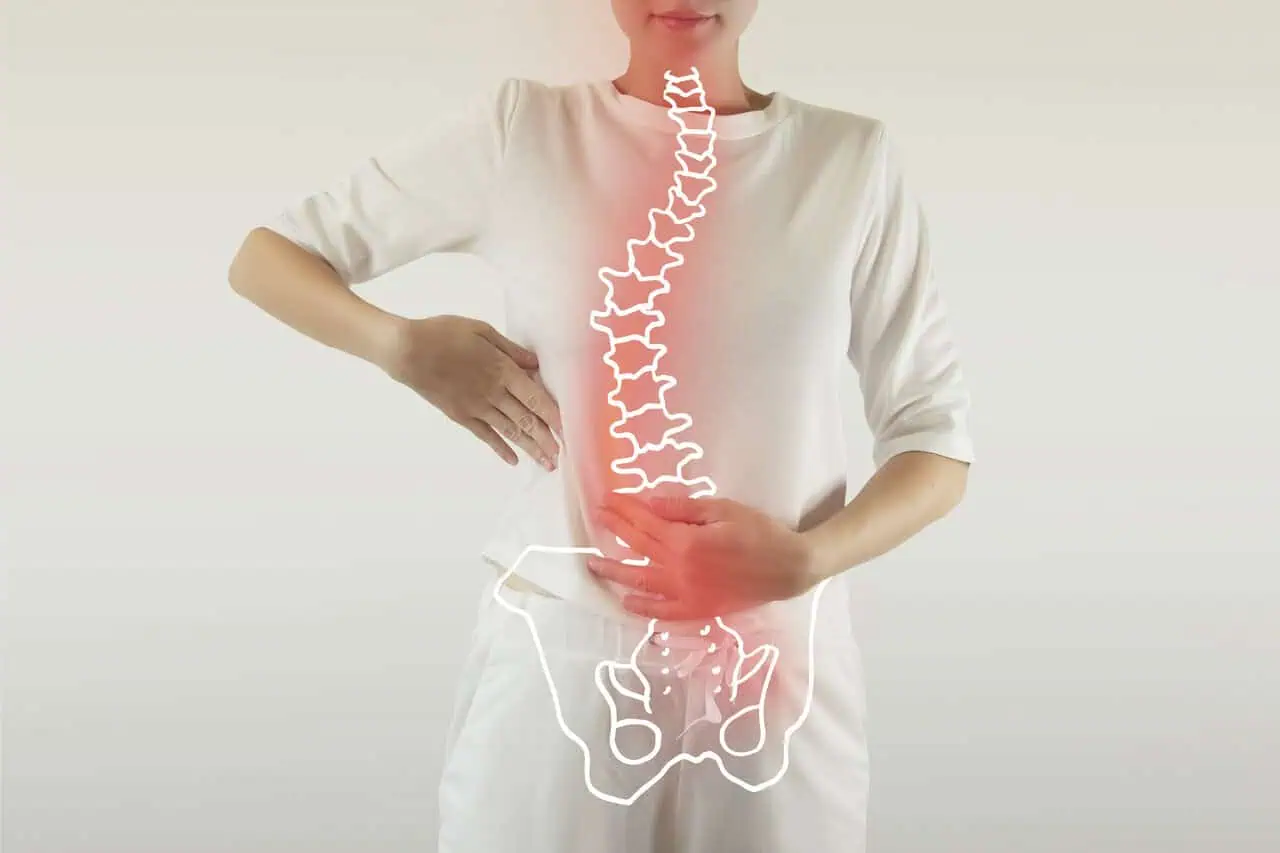Understanding Scoliosis and Pregnancy
What is Scoliosis?
Scoliosis is a medical condition where the spine curves sideways, often in an “S” or “C” shape. This curvature can occur at any point along the spine, from the neck down to the lower back. The degree of the curve can vary, leading to different levels of severity and symptoms.
| Scoliosis Type | Description |
|---|---|
| Idiopathic Scoliosis | No known cause; most common type |
| Congenital Scoliosis | Present at birth due to spinal deformities |
| Neuromuscular Scoliosis | Associated with conditions like cerebral palsy or muscular dystrophy |
| Degenerative Scoliosis | Occurs in adults due to spinal degeneration |
Symptoms of scoliosis may include uneven shoulders, a noticeable curve in the spine, uneven waist, or one hip higher than the other. For more detailed information on scoliosis, visit our article on scoliosis.
Scoliosis and Pregnancy: What You Need to Know
Pregnancy can present unique challenges for those with scoliosis. It’s important to understand how scoliosis might affect your pregnancy and what steps you can take to manage any potential complications.
During pregnancy, your body undergoes significant changes that can impact your spine. The added weight and shifting center of gravity can place extra stress on an already curved spine. While scoliosis itself doesn’t prevent you from having a healthy pregnancy, it’s essential to be aware of the potential risks and complications.
Impact on Spine and Posture
As your pregnancy progresses, the curvature of your spine may become more pronounced, leading to increased discomfort and pain. Maintaining proper posture and using supportive devices can help alleviate some of this discomfort. For tips on maintaining proper posture, visit our article on scoliosis management.
Pain and Discomfort
Many women with scoliosis report increased back pain during pregnancy. This can be due to the added weight and the pressure it places on the spine. Engaging in gentle exercises and physical therapy can help manage this pain. Explore our recommendations for scoliosis exercises that can be safe during pregnancy.
| Trimester | Common Symptoms | Recommended Actions |
|---|---|---|
| First Trimester | Mild back pain, fatigue | Regular check-ups, light exercises |
| Second Trimester | Increased back pain, posture issues | Physical therapy, support belts |
| Third Trimester | Severe back pain, mobility issues | Frequent monitoring, pain management strategies |
Consultation with Healthcare Providers
It’s crucial to consult with your healthcare provider early in your pregnancy. They can offer personalized advice and create a management plan tailored to your needs. Regular monitoring and follow-up care can help ensure that both you and your baby remain healthy throughout the pregnancy.
For more information on how to manage scoliosis during pregnancy, including recommended exercises and therapies, visit our section on scoliosis physical therapy.
Understanding scoliosis and its potential impact on your pregnancy is the first step in ensuring a healthy and comfortable experience. By staying informed and proactive, you can manage your condition effectively and focus on nurturing your body and your baby.
Effects of Scoliosis on Pregnancy
Impact of Scoliosis on Pregnancy
Scoliosis, a medical condition characterized by an abnormal curvature of the spine, can have various impacts on pregnancy. Understanding these effects can help you better prepare and manage your health during this critical period.
The extent to which scoliosis affects pregnancy largely depends on the severity of the spinal curvature. Mild scoliosis may have minimal impact, while more severe cases can lead to additional challenges. The following table illustrates how different degrees of scoliosis curvature can influence pregnancy:
| Degree of Curvature | Potential Impact on Pregnancy |
|---|---|
| Mild (10-25 degrees) | Minimal impact, regular monitoring |
| Moderate (26-40 degrees) | Increased back pain, regular monitoring |
| Severe (41+ degrees) | Higher risk of complications, specialized care |
Pregnancy can exacerbate the symptoms of scoliosis due to the additional weight and changes in the body’s center of gravity. Common symptoms include increased back pain, discomfort, and fatigue. For more on managing these symptoms, see our article on scoliosis pain.
Risks and Complications
While many women with scoliosis have successful pregnancies, there are potential risks and complications to be aware of. These can include:
- Increased Back Pain: The added weight and shifting posture during pregnancy can intensify back pain, especially in those with moderate to severe scoliosis.
- Respiratory Issues: Severe scoliosis can affect lung function, making it harder to breathe as the pregnancy progresses.
- Labor and Delivery Challenges: Scoliosis may complicate labor and delivery. Women with severe curvature may need to discuss alternative birth plans with their healthcare provider.
- Preterm Birth: Although not common, some studies suggest that severe scoliosis might increase the risk of preterm labor.
| Risk/Complication | Description |
|---|---|
| Increased Back Pain | Exacerbated by additional weight and shifting posture |
| Respiratory Issues | Reduced lung capacity due to spinal curvature |
| Labor and Delivery Challenges | Potential complications during childbirth |
| Preterm Birth | Slightly higher risk in severe cases |
It is crucial to consult with your healthcare provider to monitor and manage these risks effectively. For more information on managing scoliosis during pregnancy, read our section on monitoring and follow-up care.
Understanding the potential effects of scoliosis on pregnancy can help you take proactive steps to manage your condition and ensure a healthy and comfortable experience. Regular consultations with healthcare providers and appropriate scoliosis exercises can significantly alleviate symptoms and reduce risks. Explore our resources for more information on scoliosis treatment and scoliosis management.
Managing Scoliosis During Pregnancy
Managing scoliosis during pregnancy requires a careful approach to ensure the well-being of both you and your baby. Effective management involves regular consultations with healthcare providers, engaging in recommended exercises and therapies, and consistent monitoring and follow-up care.
Consultation with Healthcare Providers
It’s crucial to consult with your healthcare providers regularly when managing scoliosis during pregnancy. Your team may include obstetricians, gynecologists, and specialists in scoliosis treatment. They can provide personalized advice and monitor the progression of your condition throughout your pregnancy.
During these consultations, discuss any changes in your symptoms, pain levels, and any concerns you may have. Your healthcare providers can adjust your treatment plan as needed, ensuring that both you and your baby remain healthy.
| Healthcare Provider | Role |
|---|---|
| Obstetrician | Monitors overall pregnancy health |
| Gynecologist | Manages reproductive health |
| Scoliosis Specialist | Monitors scoliosis progression |
| Physical Therapist | Recommends exercises and therapies |
Recommended Exercises and Therapies
Engaging in exercises and therapies tailored for scoliosis can help alleviate discomfort and improve your overall well-being during pregnancy. These activities should be performed under the guidance of a physical therapist experienced in scoliosis physical therapy.
Some recommended exercises include:
- Pelvic tilts: Strengthen your lower back and pelvic muscles.
- Cat-Cow stretch: Enhances flexibility in your spine.
- Prenatal yoga: Improves posture and reduces stress.
Additionally, therapies such as prenatal massage can help relieve muscle tension and improve circulation. Always consult with your healthcare provider before starting any new exercise or therapy to ensure it’s safe for your specific condition.
For more detailed exercise routines, visit our article on scoliosis exercises for adults.
Monitoring and Follow-up Care
Consistent monitoring and follow-up care are essential for managing scoliosis during pregnancy. Regular check-ups allow your healthcare providers to track the progression of your condition and make necessary adjustments to your treatment plan.
Keep a record of your symptoms, pain levels, and any changes you notice. This information can be valuable during your appointments and help your healthcare team make informed decisions.
| Monitoring Activity | Frequency |
|---|---|
| Prenatal Check-ups | Every 4 weeks (initially), then every 2 weeks in the third trimester |
| Scoliosis Assessments | Every 3-6 months |
| Physical Therapy Sessions | Weekly or bi-weekly |
By maintaining open communication with your healthcare providers and following their recommendations, you can effectively manage scoliosis during pregnancy, ensuring a healthy and comfortable experience for both you and your baby.
For more information on managing scoliosis symptoms, visit our article on scoliosis symptoms.
Nurturing Your Body and Baby
Maintaining Proper Posture
With scoliosis during pregnancy, maintaining proper posture is crucial for minimizing discomfort and supporting your spine. Good posture helps distribute weight evenly and reduces strain on your back. Here are a few tips:
- Stand Tall: Keep your shoulders back and your spine straight.
- Pelvic Tilt: Engage your core and perform pelvic tilts to relieve lower back pressure.
- Sitting Position: Sit with both feet flat on the ground, and use a small pillow or rolled towel to support your lower back.
Tips for Comfort and Support
Comfort and support are essential for managing scoliosis in pregnancy. Consider these strategies to alleviate discomfort:
- Maternity Pillows: Use maternity pillows to support your back and abdomen while sleeping. These pillows can help maintain spinal alignment and reduce pressure points.
- Supportive Footwear: Wear comfortable, supportive shoes to reduce stress on your spine.
- Heat and Cold Therapy: Alternate between heat packs and cold compresses to relieve muscle tension and pain.
Self-care Practices
Self-care is vital for both your well-being and your baby’s health. Integrate these practices into your routine:
- Gentle Exercises: Engage in low-impact exercises such as swimming or prenatal yoga to strengthen muscles and improve flexibility. Consult your healthcare provider for scoliosis exercises suitable for pregnancy.
- Hydration and Nutrition: Maintain a balanced diet and stay hydrated to support overall health. Refer to our article on scoliosis nutrition for more dietary tips.
- Rest and Relaxation: Prioritize rest and relaxation to manage stress and fatigue. Techniques like deep breathing and meditation can be beneficial.
For more detailed advice on managing scoliosis during pregnancy, explore our articles on scoliosis management and scoliosis physical therapy.
Labor and Delivery Considerations
Navigating labor and delivery with scoliosis requires careful planning and consideration. Understanding the specific challenges and options available can help ensure a safer and more comfortable experience.
Birth Planning with Scoliosis
Creating a birth plan is essential for managing scoliosis during delivery. Discuss your condition with your healthcare provider to determine the best approach. Some key topics to address include:
- Type of delivery (vaginal or cesarean)
- Anesthesia options
- Potential need for additional monitoring
- Positioning during labor
Your birth plan should be flexible to accommodate any unforeseen changes. Ensuring that your medical team is aware of your scoliosis and any related complications will help them provide the best care possible.
Pain Management Options
Pain management is a crucial aspect of labor and delivery, especially for those with scoliosis. Various options are available, and your choice will depend on your specific needs and medical advice.
| Pain Management Option | Description | Considerations |
|---|---|---|
| Epidural | A common method of pain relief involving an injection near the spinal cord | May require specialized administration due to spinal curvature |
| Spinal Block | Similar to an epidural but provides complete numbness for a shorter period | Suitable for cesarean sections, requires careful placement |
| IV Pain Medication | Medications administered through an IV to manage pain | Can be used in conjunction with other methods |
| Natural Pain Relief | Techniques such as breathing exercises, hydrotherapy, and massage | May be less effective for severe pain, requires preparation |
Discuss these options with your healthcare provider to determine the best pain management strategy for you. For more information on managing scoliosis pain, visit our article on scoliosis pain.
Postpartum Recovery and Care
After delivery, it’s important to focus on your recovery and care, particularly if you have scoliosis. Some key considerations include:
- Monitoring your spine for any changes or complications
- Continuing with recommended exercises and physical therapy
- Utilizing proper posture and body mechanics to avoid strain
- Seeking support from healthcare providers and support groups
Postpartum care is crucial for both your well-being and your ability to care for your newborn. For more tips on managing scoliosis and related therapies, check out our articles on scoliosis exercises for adults and scoliosis physical therapy.
By understanding the labor and delivery considerations for scoliosis, you can better prepare for a safe and healthy experience. Collaborate with your healthcare team to create a tailored plan that addresses your unique needs and ensures the best outcomes for both you and your baby.
Support Systems and Resources
Navigating scoliosis during pregnancy can be challenging, but having the right support systems and resources can make a significant difference. Connecting with others who understand your experience and seeking both emotional and physical support can help you manage your condition effectively.
Connecting with Support Groups
Support groups offer a sense of community and understanding. Joining a scoliosis support group can provide you with valuable insights from others who have faced similar challenges. These groups often share tips, personal stories, and coping strategies that can be incredibly helpful during your pregnancy journey.
| Support Group | Description |
|---|---|
| Online Forums | Connect with others virtually to share experiences and advice. |
| Local Meetups | Attend in-person meetings to build a local network of support. |
| Social Media Groups | Join Facebook or other social media groups focused on scoliosis and pregnancy. |
Seeking Emotional and Physical Support
Emotional and physical support is essential when managing scoliosis during pregnancy. Seeking help from healthcare providers, family, and friends can make a significant difference in your overall well-being.
- Healthcare Providers: Regular consultations with your doctor or physical therapist can help monitor your condition and provide tailored advice for managing scoliosis during pregnancy. Visit our article on scoliosis physical therapy for more information.
- Family and Friends: Lean on your loved ones for emotional support. They can offer encouragement and assist with daily tasks to help ease your physical strain.
- Mental Health Professionals: Consider speaking with a therapist or counselor if you’re feeling overwhelmed. They can provide coping strategies and emotional support.
Resources for Further Information
Accessing reliable resources can help you stay informed about scoliosis and pregnancy. Here are some recommended articles and topics to explore:
- Scoliosis
- Scoliosis Treatment
- Scoliosis Symptoms
- Scoliosis Brace
- Scoliosis Exercises
- Scoliosis Diagnosis
- Scoliosis Management
These resources provide comprehensive information on various aspects of scoliosis, including diagnosis, treatment options, and management strategies. By leveraging these resources, you can better understand your condition and make informed decisions about your health during pregnancy.











